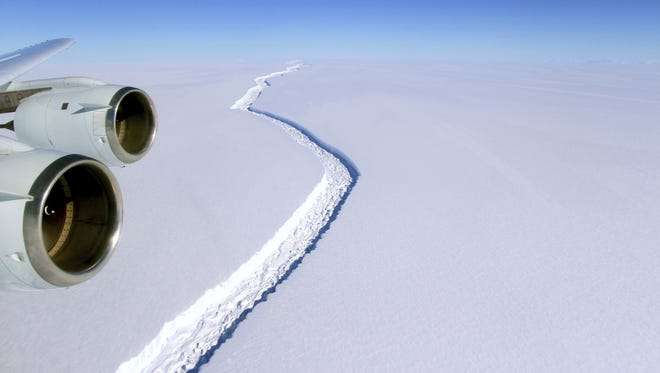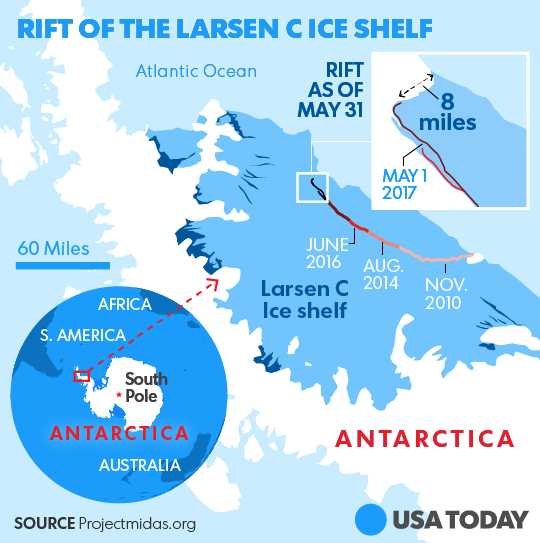Massive crack in Antarctica ice shelf grows 11 miles in only 6 days

A massive crack in an Antarctic ice shelf grew by 11 miles in the past six days as one of the world's biggest icebergs ever is poised to break off.
The crack in the Larsen C ice shelf is now about 120 miles long, and only eight miles remain until the crack cuts all the way across, producing an iceberg about the size of the state of Delaware.
Adrian Luckman of Project MIDAS, a British Antarctic research project that's keeping watch on the ever-growing crack, said it's the largest jump since January. The full process is known as "calving," the timing of which is "very close," he added.
Once the iceberg breaks off, it "will fundamentally change the landscape of the Antarctic Peninsula," he said.

Ice shelves are permanent floating sheets of ice that connect to a landmass, according to the National Snow and Ice Data Center. Since the ice is already floating, the newly created iceberg won't contribute to rising sea levels.
Still, studying ice shelves and icebergs is important because they "hold back the glaciers that 'feed' them," Luckman said. "When they disappear, ice can flow faster from the land to the ocean and contribute more quickly to sea-level rise."
Read more:
7 facts on the crack in the Antarctic ice shelf
Huge Antarctic ice shelf crack now has second branch
'Watching with bated breath': Massive iceberg set to break off Antarctic ice shelf
A similar event happened 15 years ago with the dramatic break-up of part of the nearby Larsen B ice shelf. After that break, the number of glaciers behind it accelerated and are still flowing faster than before.
Project MIDAS said there is no evidence to link the growth of this rift, and the eventual calving, to climate change. However, it is widely accepted that warming ocean and atmospheric temperatures have been a factor in earlier disintegrations of ice shelves elsewhere on the Antarctic Peninsula, most notably Larsen A in 1995 and Larsen B in 2002.
Global warming has pushed temperatures up to 5 degrees higher in the region since the 1950s and could increase up to 7 degrees more by the end of the century, putting more stress on ice, according to Climate Central.